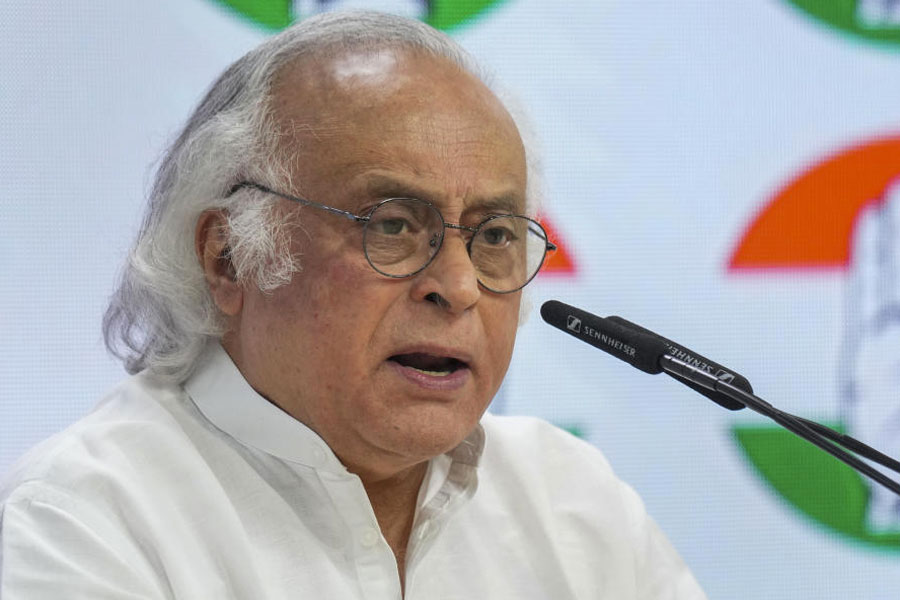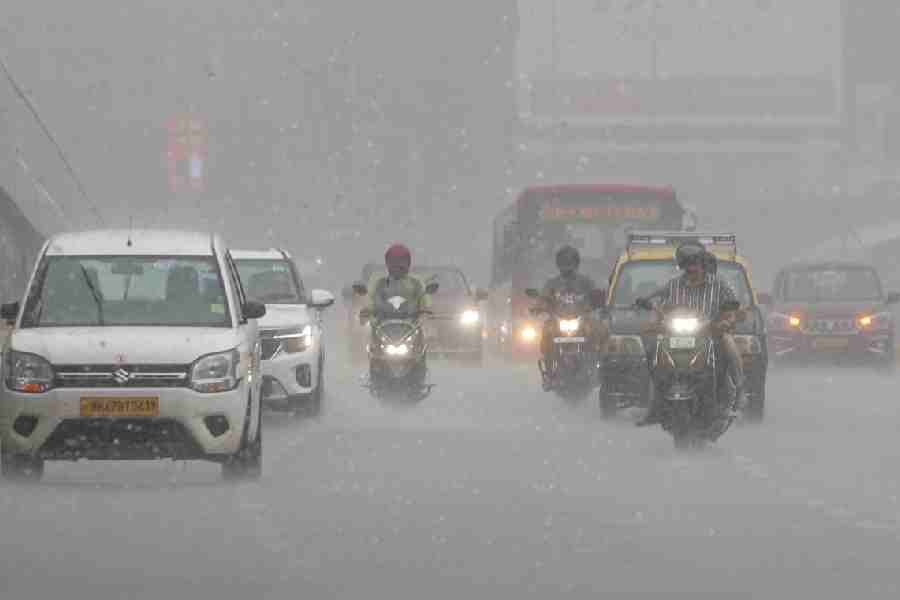 |
Someone commented only half in jest that this column plays safe by ignoring Mamata Banerjee. The remark was unfair to the columnist — for obvious reasons — but even more so to the chief minister by implying that comments on her dispensation can only be critical. That being the unanimous verdict of Calcutta drawing rooms, it’s only fair to recount what a pleasant surprise a recent visit to what I still think of as the Dhakuria lakes turned out to be.
New Delhi probably finds Banerjee an international embarrassment. National party leaders may not have forgotten her notorious sulks and tantrums. Society’s disdain can be summed up in Lord Carrington’s exasperated outburst against the “f***ing stupid, petit bourgeois woman” who was his prime minister. No parallel is ever exact. Margaret Thatcher trumped Carrington, her most trusted foreign secretary who actually held her in respect and affection, by calling herself a “tough bitchy housewife.” Moreover, Indian politics bristles with operators on the make with hardly a suave and accomplished Carrington of ancient lineage among them. But Banerjee’s indisputable background saves her from the estrangement from “the majority” that Amartya Sen deplores in today’s Marxist leadership. In her crumpled cotton sari and Hawaii slippers, Bengal’s Didi is certainly no Brinda Karat.
But I mustn’t wander from the small things I set out to write about. These are the few — too few, alas! —breaks with more than three decades of deliberate neglect that strike me on my perambulations when disappearing or broken pavements often force me on the mercy of reckless traffic. The transformed lakes are one. I may have missed other innovations that help to make Calcutta a slightly less unliveable place. Much still needs to be done in vast areas. The ostentatious over-illumination of some streets is an obvious source of corruption. The ubiquitous blue and white can be tiresome. The obsession with paint and colour, instead of repair and maintenance, betrays superficiality. But there are visible indications all the same that it is no longer official policy to allow the city to crumble into a slum because the urban population isn’t considered politically deserving of the ruling party’s ministrations.
Not all the changes may be the Trinamul Congress’s handiwork. For instance, a young man in the small bustee behind the shacks where Mandeville Gardens branches off into Swinhoe Street gushed that his home is no longer flooded because “Subrata (no honorific!) has laid wide underground pipes to drain away the rain water.” He meant Subrata Mukherjee, the local strong man, but in which of his political incarnations did Mukherjee wave this particular magic wand? However, Trinamul can’t be denied credit for making it possible to walk along Ballygunge Circular Road past the Automobile Association of Eastern India towards Rainey Park. So quickly is unpleasantness forgotten that few even notice the difference. But instead of the putrefying pile of rubbish that spilled on the road and stank to high heaven, three garbage compactor machines in a neat alcove now save passers-by the sight and smell of decaying rubbish.
I have more than once been caught in the earlier daily clearing operations and had to move away hastily to avoid not only the stench but the shower of filth that covered road and pavement as disposal trucks with their backhoe lifters clumsily set about loading the garbage to be taken away while traffic from several directions snarled to a honking halt. I gather similar compactor machines were also installed last year near Southern Avenue’s crossing with Lake View Road but more than 400 open rubbish dumps still remain.
Mohor Kunja provided the second surprise, and not only because of an intriguing name. This is a part of the Maidan I drive, not walk, through to get to somewhere else. So, when curiosity impelled me to stop one afternoon and stroll through the ornate but tasteful wrought iron gates, I was at once struck by the park’s attractive layout and the absence of several features common to all the city’s public spaces. Not a trace of litter, no paan spatterings or cigarette butts soiled the ground. There was no crowd, just some strollers and a few on the benches. There were no beggars, hawkers, peddlers and mendicants either. Yet, I saw no policemen or other visible symbol of authority. Only a “No Smoking” sign. Nor, despite the name’s tribute to Kanika Bandopadhyay’s nickname, did loudspeakers blaring out Tagore’s songs destroy the serenity of silence. Culture hasn’t run amok.
Scientific garbage management and Mohor Kunja could be isolated phenomena. It’s in the Dhakuria lakes that I glimpsed the possibility of a new Calcutta arising out of not only the state’s beneficence but the public response to it. My memory of the area goes back to the closing months of World War II, when as an eight-year-old boy I stood with nose pressed into the high expanded wire fence surrounding the American army camp. Occasionally, a soldier might scatter largesse of Wrigley’s chewing gum but that wasn’t the only or even main attraction. The camps provided us with our first sight of Blacks. I wasn’t especially comfortable with American soldiers who were also billeted in several private houses around the area and, like Roman emperors, delighted in gladiatorial contests among small Bengali boys. I had to take to my heels on one occasion to escape two grinning young Americans in khaki brandishing a pair of boxing gloves. They needed someone to take on a youth who had emerged victorious from one bout and was spoiling for another. In contrast, the Blacks were safely caged even if exuding silent surliness.
The lakes have been transformed. The openness has gone. Walls and fences block the view. Clubs have taken possession of empty land. Graceful wooden benches have disappeared one by one. Nichidatsu Fujii’s Japanese temple is now a lost fragment of Buddhist universalism smothered in middle class Bengali respectability. Contrary to promises and expectations, the Ramakrishna Mission has completely swallowed the ruined and haunted palace of my childhood. The mosque at the end of the hanging bridge is a beleaguered fortress, the grass round it covered in cracked cement. The repeated official graffiti, “No Lovers Point”, and the badly written ungrammatical warnings against “immoral acts” trample on peace and privacy. I wouldn’t be surprised if the large swishing fish are no longer seen under the bridge; they must have fled like the tumbling rats in the wilderness that is Curzon Park or stopped like the toy train that chugged so bravely in the 1980s.
But the disrepair of recent years has gone. So, too, have the cars, and the vendor with a wheeled box whom younger men called “Kompanee”. He always served me tea to the surprise of late evening clients who bought stronger stuff. Brick paths are repaired, flower beds well tended, trees droop gracefully over the bank, benches look clean. It was late afternoon on a weekday and the sun was setting beyond the island, the air tinged with chill. The swarms of grim morning walkers had long gone, garrulous evening flocks yet to come. Only the rowers broke the water’s surface, gliding up and down in the distance to their rhythmic chants. Sprawled on the grass, boys and girls were painting landscapes. The horseshoe seating accommodated a musical group around a harmonium.
That tranquillity owes much to the setting. People respond unconsciously to the ambience. Seeing that, it occurred to me that the country might be waiting in nervous expectation for this year’s electoral verdict, but Mamata Banerjee knows, adapting Thomas (Tip) O’Neill, speaker of the American House of Representatives, that local matters more in politics than national and international.











